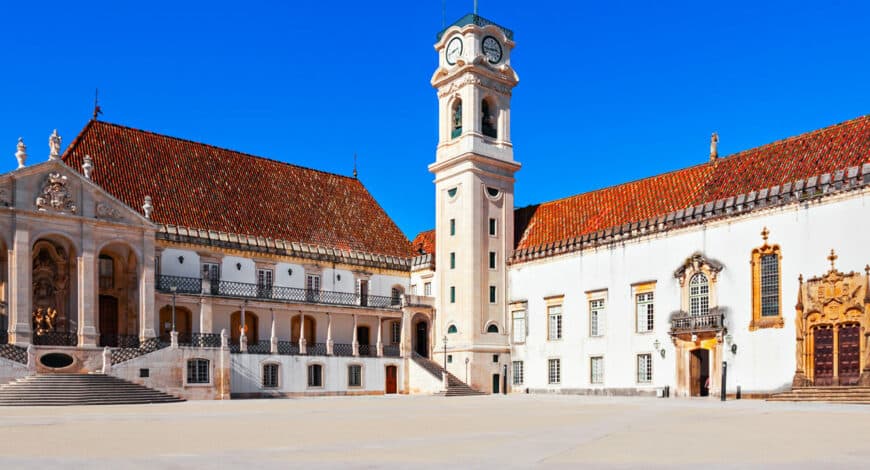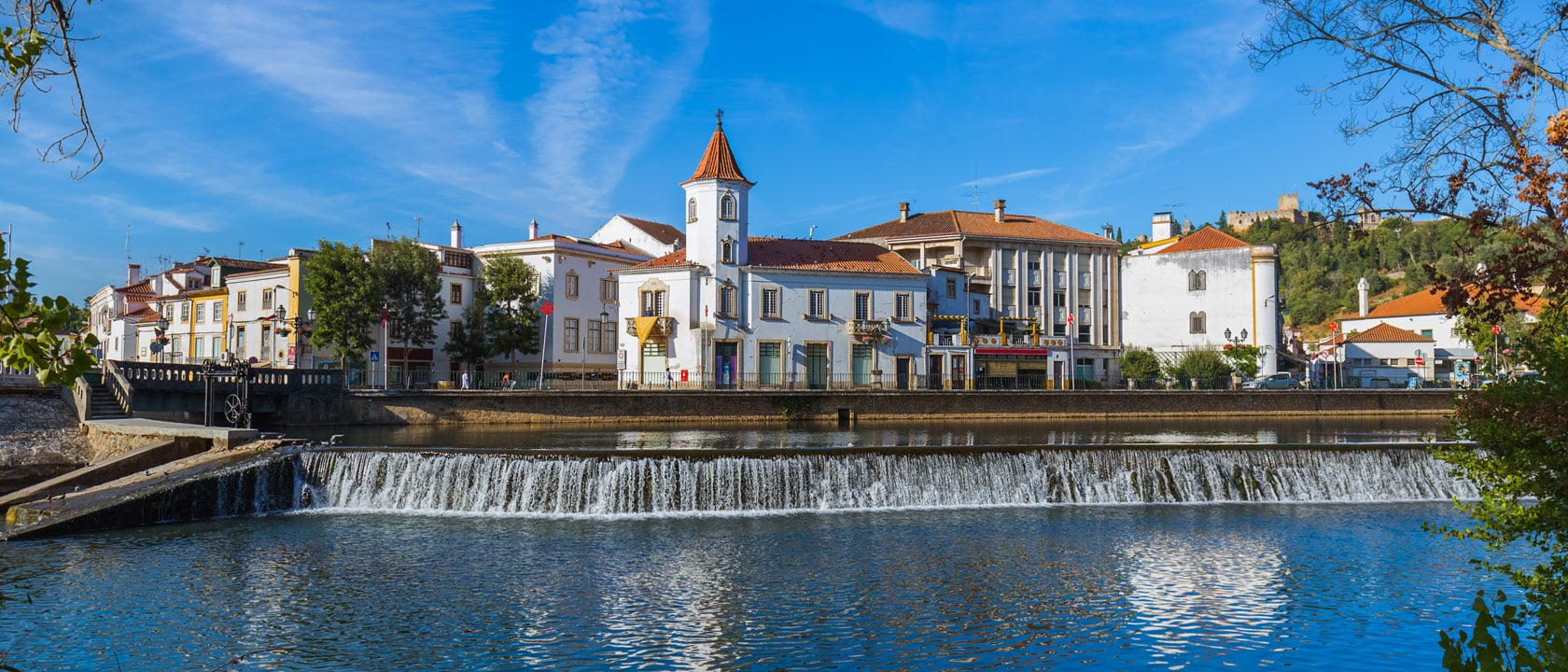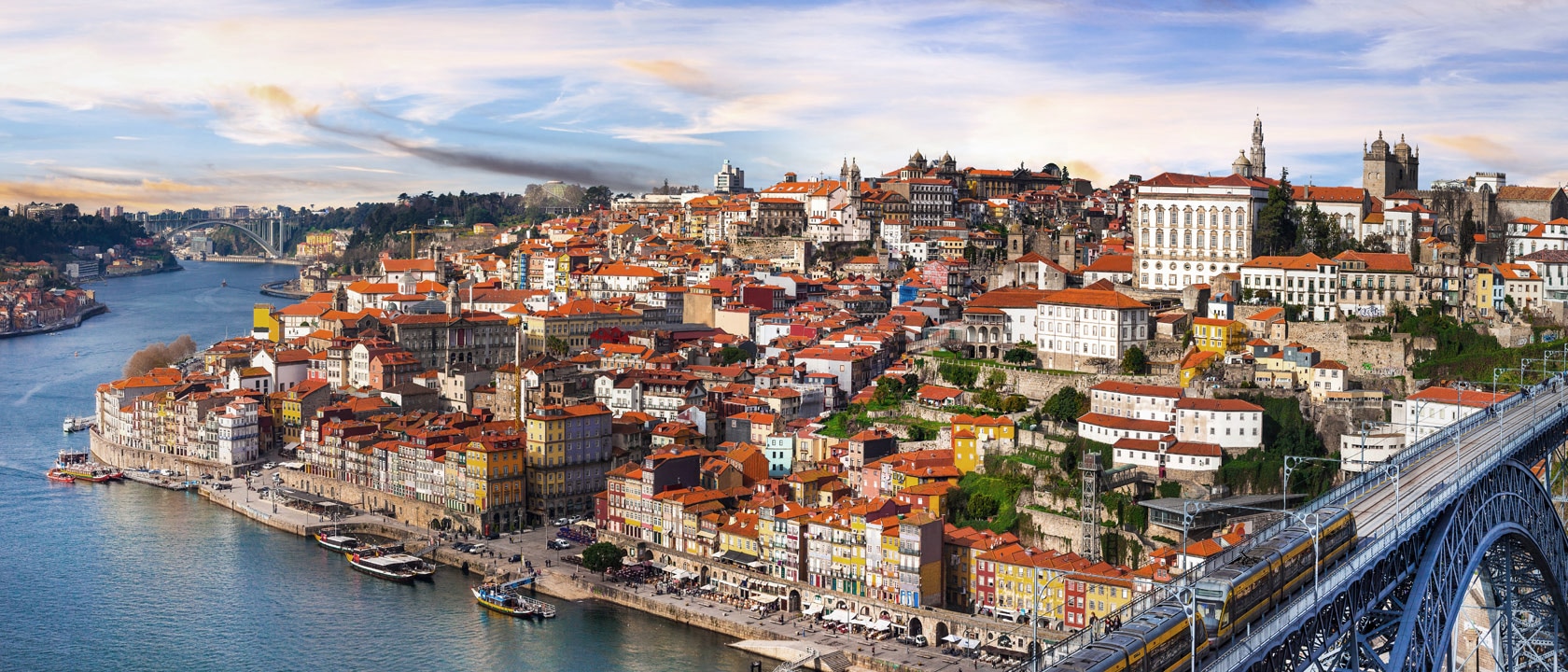Historical Background: The History of Lisbon & Portugal

During the Prehistoric period the valley in which the heart of Lisbon now lies was the bed of a forked branch of the Tagus; the identity of the inhabitants on the surrounding hills is unknown. It is believed, but not proven, that the city was founded around 1200 BC as a trading station by the Phoenicians from the Levant. Its ancient name, Olisipo, may derive from the Phoenician alis ubbo (‘delightful little port’). Another legend has it that the city is named after its mythical founder, Ulysses.
From 205 BC to c.409 AD what is now Portugal fell under Roman dominion, forming the major part of the province of Lusitania. Julius Caesar raised Lisbon to the dignity of municipium and named it Felicitas Julia. Iberia was an important region in the Roman empire, made wealthy by its export of agricultural produce like olive oil and especially, of minerals. In the fifth century the peninsula was invaded by the Alans, followed by the Suevi, and then by the Vandals who established a kingdom which endured until 711 AD. The plan of Lisbon’s original fortifications is the sole vestige of the Vandal presence in the city.
Berbers from the Maghrib (now Morocco) took Lisbon during their early eighth century invasion of the Iberian Peninsula. Portugal became part of the Emirate and then Caliphate of Córdoba. When the Caliphate collapsed in 1037 into a number of petty Muslim kingdoms (Taifas Reyes), the southern part of Portugal became part of the taifa of Badajoz. Lisbon was to remain in Muslim hands until 1147, despite attempts to take it by the Normans in 844 AD and by Alfonso VI of Leon in 1093. After 1037, however, the weakness of the taifas gave the small Christian kingdoms of northern Iberia an opportunity to expand. What is now northern Portugal passed to the Kingdom of León in the eleventh century.
Under the Muslims Lisbon was known under variations of its present name: Luzbona, Lixbuna, Ulixbone, and Olissibona. Some authorities contend that the Muslims took this name from the conquered Roman castle, but Lisbon historians suggest that it derives from água boa (‘good water’). Defended by high walls, the Muslims withstood months of siege when Lisbon was assailed by an alliance of Portuguese ‘crusaders’, and Anglo-Norman and Flemish crusaders. The forces were led by Afonso Henriques, Portugal’s first king. The city finally fell in 1147 and the Christians successfully resisted Muslim attempts to retake it. The Muslim alcazar (citadel) was transformed into a Portuguese royal palace, and, according to legend, Lisbon Cathedral (Sé Patriarcal) was converted from a mosque (although there is no physical evidence of a building on this site before the inauguration of the present cathedral by Afonso Henriques).
Afonso Henriques established his court at Coimbra. Lisbon did not become the national capital until more than a century later, in 1256. Within its Muslim walls, of which some traces still remain, medieval Lisbon measured approximately four hundred metres at its widest point and one hundred and eighty three metres at its longest point. The medieval city clung to the hill below the citadel. Even before the Portuguese conquest, however, some houses had already been built outside the walls toward the river. The site of this first Lisbon is now the lively Alfama quarter, which has kept its labyrinthine medieval street plan.
Dinis I (1279-1325) decreed that Portuguese, the dialect of the Porto region in the north, should be the national language of the young kingdom. He founded a university in Lisbon in 1290. During his reign, other hilltops surrounding the valley Tagus were crowned with convents and churches. It was once believed that the Christians of Iberia were united in their ‘crusade’ against Islam. Nothing could be further from the truth. The young kingdom of Portugal was constantly at war with burgeoning Castile. We must remind ourselves that at this time ordinary people did not have the sense of nationalism which Europeans developed in the nineteenth century. Nevertheless, this is the time when Portuguese would have been developing a vague sense of themselves, in large part through their language, but also through characteristics such as their orientation toward the sea. This was in stark contrast to land-locked Castilians who, until the conquest of the Americas, looked inward upon the vast mesetas of their kingdom. It is interesting that one of the oldest continuous alliances in the world, between the sea-faring Portuguese and English, evolved at this time.
The wars with Castile were in truth dynastic squabbles between the Castilian and Portuguese monarchies. In 1372-73 Lisbon was besieged and burned by the Castilians, who forced the Portuguese Ferdinand I, an unsuccessful contender for the Castilian throne, to repudiate his alliance with England; learning his lesson, Ferdinand swiftly erected new defences. His wall was more than six kilometres long, defended by seventy-seven towers and punctured by thirty-eight gates. It enclosed an area that was now more than two hundred and forty-seven acres and enabled the Portuguese to withstand a renewed Castilian attack (1384), which followed Ferdinand’s death.
At the beginning of the so-called Portuguese ‘Age of Discovery’ (1415-1578), a census of Lisbon showed 65,000 inhabitants occupying twenty-three parishes. Trade enriched many residents and the city was endowed with grander and more luxurious buildings. African slaves became a familiar Lisbon sight; the trade in slaves being one in which Portugal played a major role. After Vasco da Gama led a Portuguese fleet to India in 1498, colonies of German, Flemish, Dutch, English, and French traders established themselves in Lisbon. Greeks, Lombards, and Genoese who had lost their trading enclaves in Constantinople after its fall to the Ottoman Mehmet the Conqueror (1453), also came to Lisbon.
Under the powerful Manuel I (1495-1521), there developed an extremely rich version of late Gothic architectural decoration celebrating God, Portugal’s burgeoning maritime power and King Manuel himself. The Manueline style of Lisbon’s Tower of Belém and Jerónimos Monastery is found in even more exuberant form in the rival cities of Batalha and Tomar. Manuel I promoted the urbanization of the central valley between Lisbon’s hills, creating a city square, the Rossio, which immediately became a popular meeting place. On the banks of the Tagus he constructed a new palace, the Paços da Ribeira, with a large square laid out along its eastern flank. The area between the Rossio and the Palace Terrace (Terreiro do Paço) was soon criss-crossed with streets, along which rose the new shops, churches, and hospitals of what had become a phenomenally prosperous city.
Lisbon lost its prosperity, however, in the sixteenth century. A number of reasons account for this. In 1537 Manuel I’s successor, John (João) the Pious, transferred the university to the royal palace at Coimbra. He also invited the Jesuits and the Inquisition to come to Portugal to counter what he considered the ungodly materialism of the wealthy city. The Inquisition persecuted the Lisbon Jews, who were its bankers, financiers, and moneylenders. Much property was confiscated and many Jews left the city, taking their money and financial expertise with them. This disrupted Lisbon’s connections with foreign markets and damaged the country’s economy. Plagues and earthquakes during this time, and the migration of half the nation’s population to Portugal’s colonies in search of wealth, compounded the problem. Portugal lost its skilled workers and farmers, wages rocketed and the country was forced to import food at crippling prices.
In 1578 King Sebastian of Portugal was killed in a disastrous invasion of Morocco. Two years later, Philip II of Spain invaded and united Portugal with Spain. In 1588 it was from Lisbon that the Armada sailed against England, Portugal’s oldest ally. In the half century that followed, Lisbon prospered as a harbour for the import of riches from the Spanish Main. In 1640 a conspiracy of Lisbon nobles drove out the Spaniards, restoring the country’s independence. The square just north of the Rossio, Restoration Square (Praça dos Restauradores), is named for them.
With the Cromwellian treaty of 1654, following British military assistance to the Portuguese in the war with Spain, British merchants trading and living in Lisbon set up a corporation, which became known as the British Factory. The Factory negotiated trade concessions and other privileges with the Portuguese government, appealing to the British government to put pressure on the Portuguese authorities when necessary. Britain’s economic and political influence on Portugal was strong, and the Factory remained in existence until 1810. The city, meanwhile, was devastated by an earthquake in 1755, from which its fabric has only recently completely recovered.

 Silver Coast and Golden River: Art, Architecture & Culture of Portugal 2025
Silver Coast and Golden River: Art, Architecture & Culture of Portugal 2025  Silver Coast & Golden River: Art, Architecture & Culture of Portugal 2024
Silver Coast & Golden River: Art, Architecture & Culture of Portugal 2024